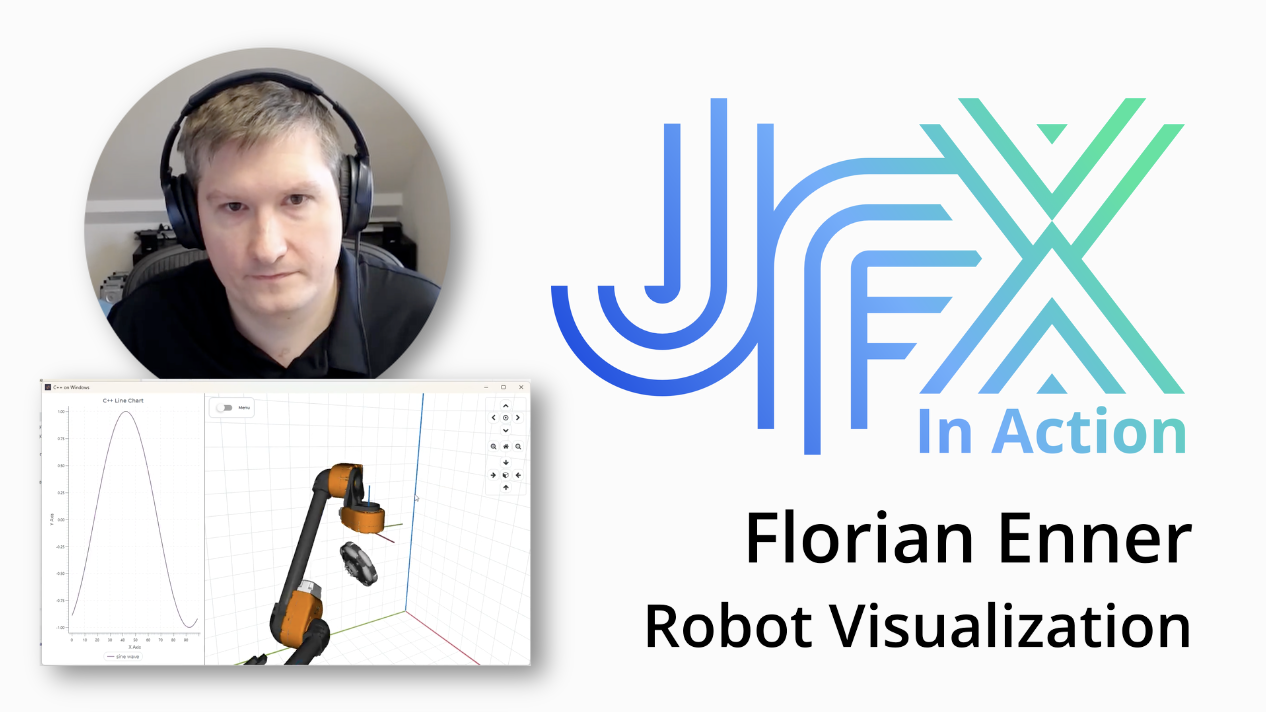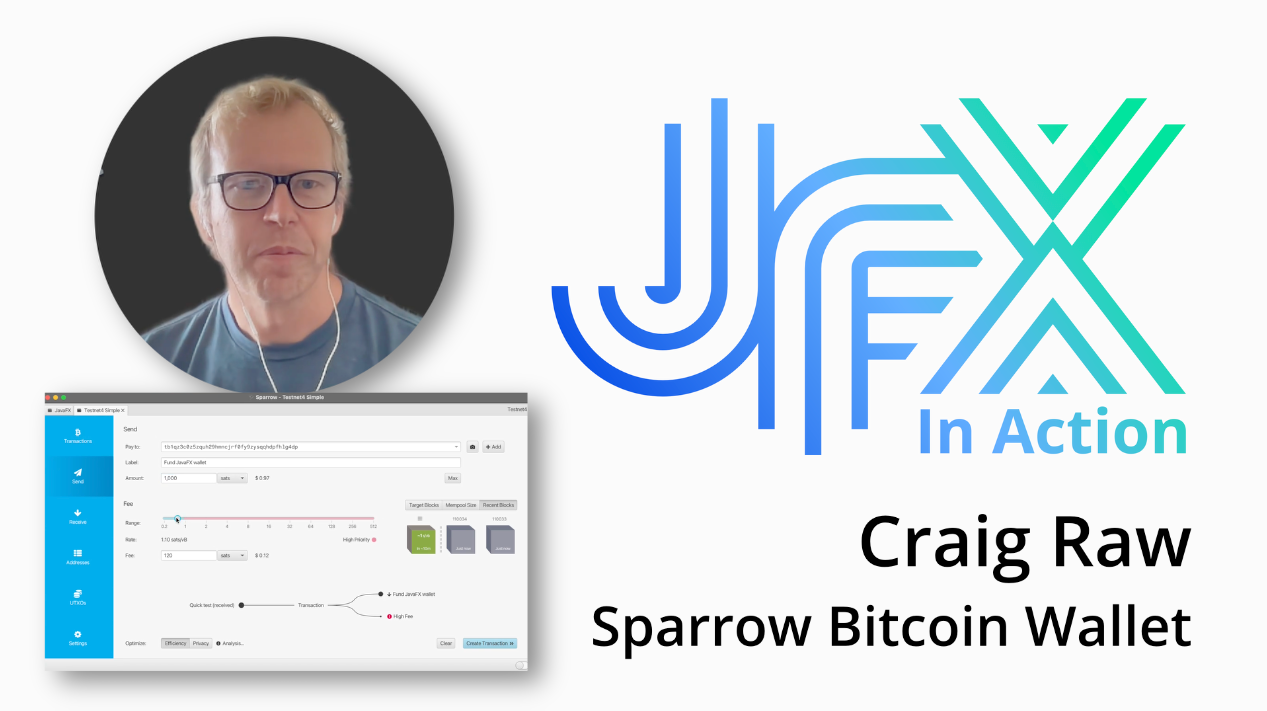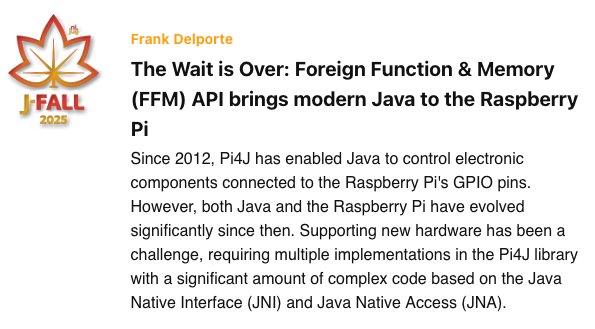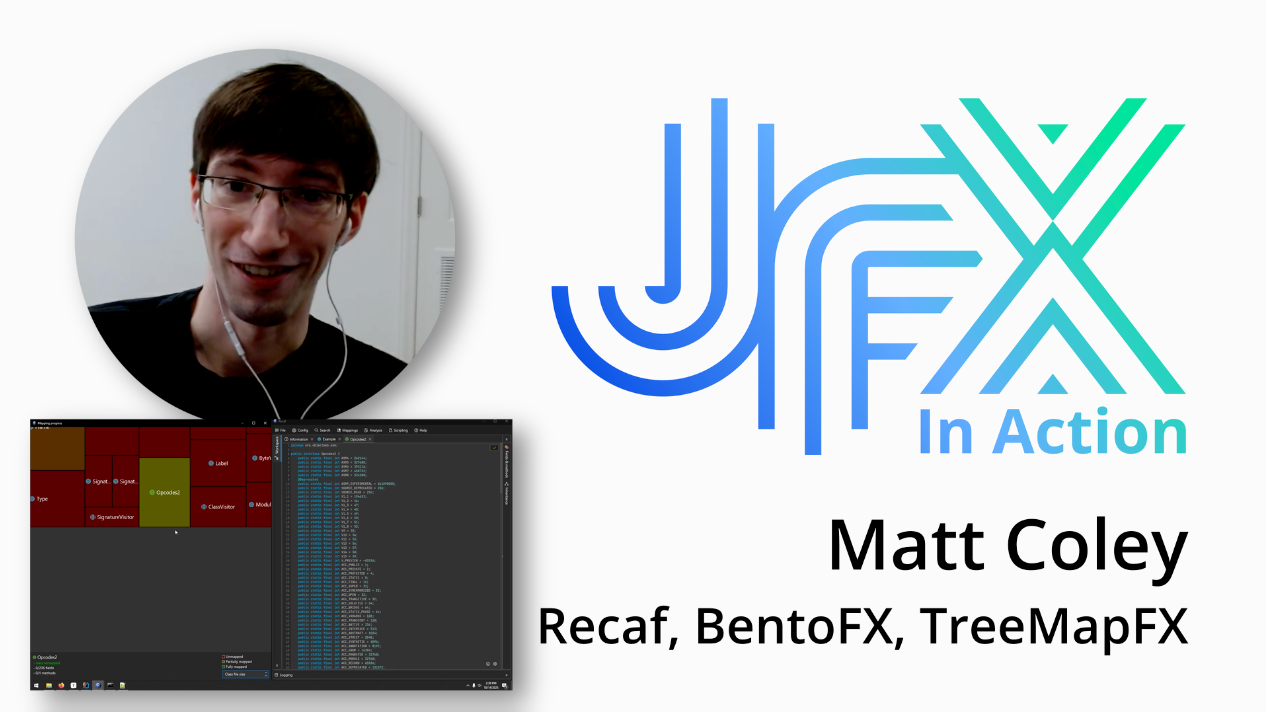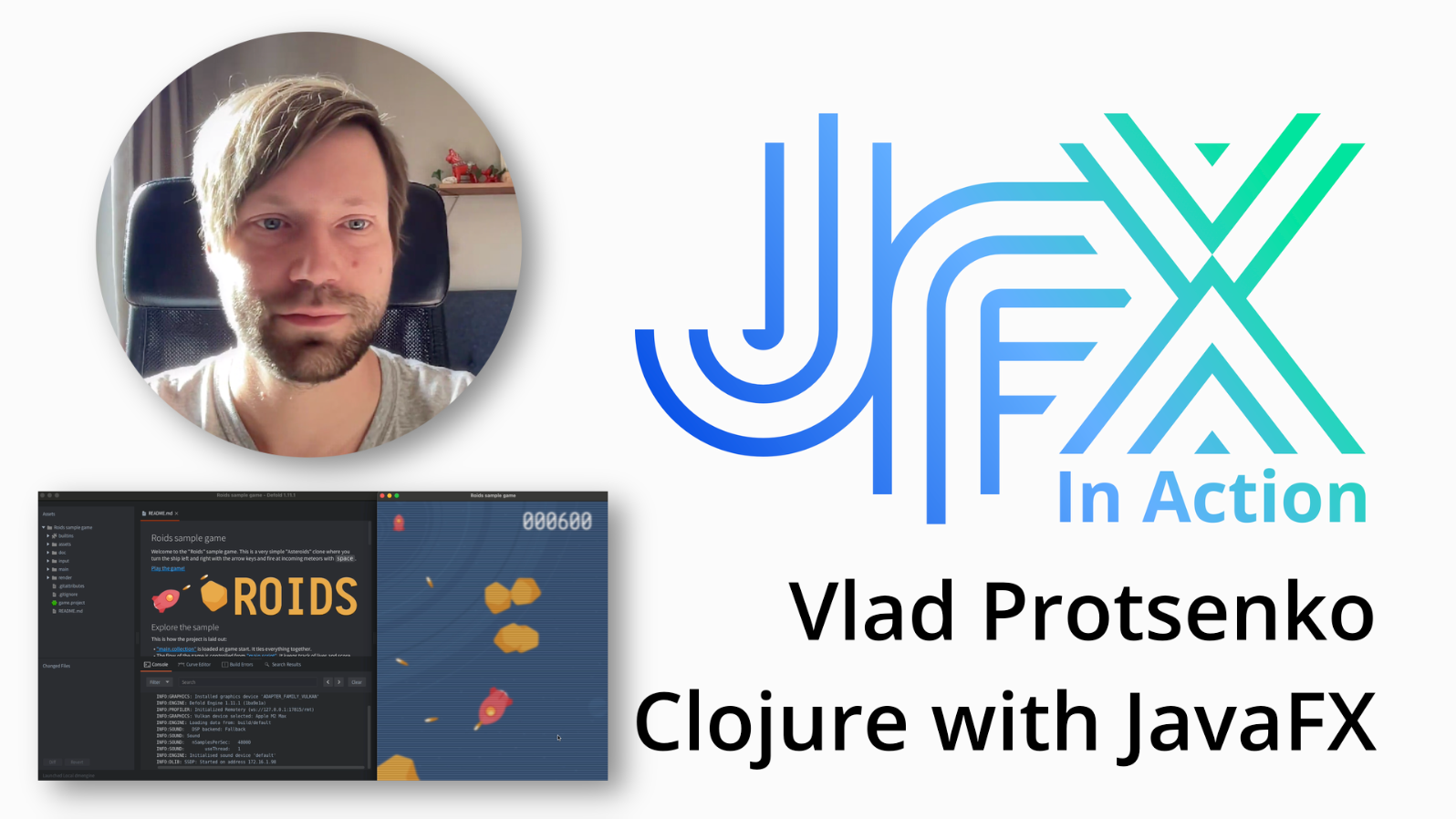Blog of Frank Delporte, Java Champion, Software Developer, Technical Writer, Nerd/Geek
JavaFX In Action #24 with Florian Enner about Robot 3D Visualizations and Charts
I met Florian Enner a few times at Devoxx in Belgium, and each time he amazed me with his JavaFX demos! He is one of those rare developers who take JavaFX to the next level by adding 3D visualizations.
Links from the YavaConf talk 'Foreign Function & Memory (FFM) API on Raspberry Pi'
These are the links from the Ya!vaConf virtual talk on December 4, 2025: “Java Champion Talk - How the new Foreign Function & Memory API pushes Java on Raspberry Pi to the next level”.
JavaFX Links of November 2025
Here is the overview of the JavaFX LinksOfTheMonth of November 2025. You can find the weekly lists on jfx-central.com. Did we miss anything? Is there anything you want to have included in one of the next overviews? Let us know via links@jfx-central.com.
First Experiments with Java on the LattePanda IOTA: An Alternative to Raspberry Pi?
After years of experimenting with Raspberry Pi boards, Java, JavaFX, and Pi4J to control electronics, I wanted to explore whether my knowledge and experience could be applied to similar boards from other providers. There are many alternatives available these days, based on ARM, Intel processors, and RISC-V architectures.
JavaFX In Action #23 with Craig Raw about the Sparrow Bitcoin Wallet
I don’t have any bitcoin myself, but still find the idea of the blockchain and “public shared money” fascinating. And as it turns out, there is a free and open-source bitcoin wallet, created with JavaFX, that wants to help people understand how the Bitcoin system works, and make transactions easy to understand. Thanks to the work of Craig Raw, there is an easy-to-use desktop application to create and manage wallets. And while he explains the app itself, we also learn a lot about the Bitcoin ecosystem, reproducible builds, security, hardware wallets, and more!
Links from the JFall talk 'Foreign Function & Memory (FFM) API on Raspberry Pi'
These are the links from the JFall talk in Ede, The Netherlands, on November 6, 2025: “The Wait is Over: Foreign Function & Memory (FFM) API brings modern Java to the Raspberry Pi”.
Will OpenJFX Be Merged Into OpenJDK? It Would Be a Perfect Match with Java on Mobile!
While looking for articles for the JFX Central Links Of The Week, I found this very interesting article by Paul Krill on InfoWorld. It’s based on an October 29 post by Bruce Haddon on an OpenJDK discussion list in which he argues that the reasons for the separation of OpenJFX from OpenJDK in Java 11, more than seven years ago, are much less applicable today.
JavaFX Links of October 2025
Here is the overview of the JavaFX LinksOfTheMonth of October 2025. You can find the weekly lists on jfx-central.com. Did we miss anything? Is there anything you want to have included in one of the next overviews? Let us know via links@jfx-central.com.
JavaFX In Action #22 with Matt Coley, diving into byte code and JARs with Recaf and JavaFX libraries
For my next JavaFX In Action interview, I talked with Matt Coley about Recaf and the JavaFX libraries he’s working on. But unexpectedly, I got a deep-dive course on Java byte code, obfuscated code, and how JARs can be (ab)used to hide the real code they are executing…!
JavaFX In Action #21 with Vlad Protsenko, Combining Clojure with JavaFX for Game Development with Defold
Vlad Protsenko is a Clojure developer working at Defold. While I initially wanted to learn about the Cljfx project, our conversation evolved into a learning experience: a practical getting-started guide to Clojure, a hands-on demonstration of building JavaFX user interfaces with minimal code, and an inside look at the Defold game engine and its JavaFX-based IDE.

